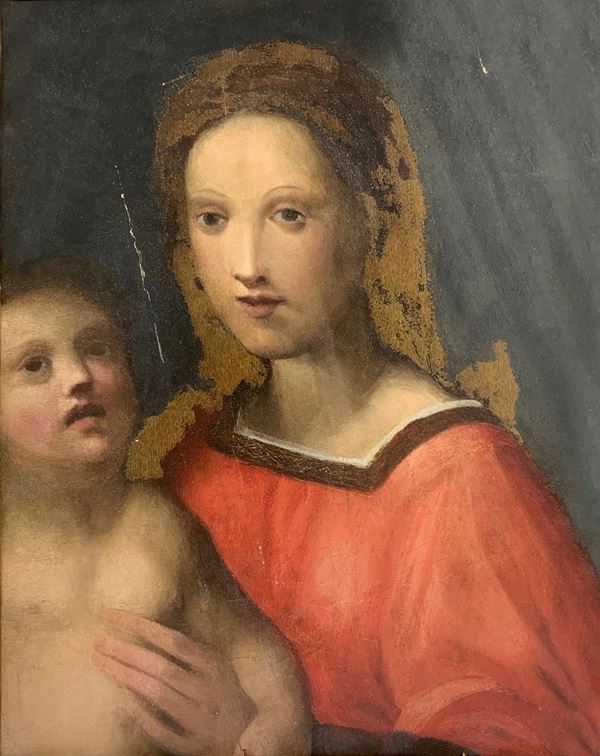221
Madonna with Child, Late 16th century
Oil painting on wood
48x39 cm, framed 58x49 cm
The painting in question, adorned in a seventeenth-century frame, shows the Virgin and Child in an iconography typical of the Tuscan area, despite being in mutile conditions due to the removal of a large part of the panel. The original compositional structure of the work had to reveal the entire body of the child Jesus, intent on holding the goldfinch with his right hand, as well as the face of a St. John behind the Madonna, thus showing a different iconographic system than the current one. . The close observation of the pictorial surface using Wood's lamp makes visible gaps scattered in various parts of the work, subjected to evident restoration interventions with the now consolidated technique of rigatino, whose traces are distinguishable around the head and shoulders of Maria. & Nbsp;
The lack of formal completeness of the painting does not, however, prevent us from appreciating its historical-artistic value, supported by a correct conservative intervention that helps to limit the chronological period and the geographical area of reference: the painting can be dated to the last twenty years of the 16th century and is ascribable to the circle of Francesco Vanni (Siena, 1563 - Siena, 1610), a Tuscan painter from Siena. ASORstudio
€ 2.800,00
Starting price
Unsold








